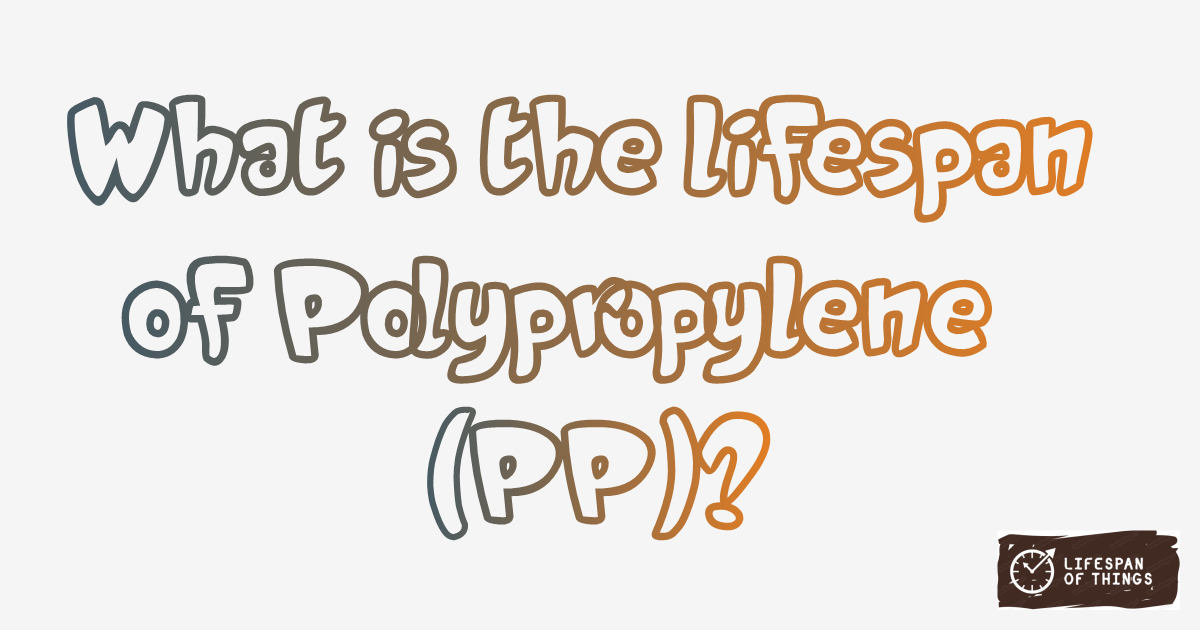
10 - 15 Years
Lifespan of Polypropylene (PP) is 10 - 15 Years. Factors influencing the lifespan of Polypropylene (PP) include exposure to UV radiation, temperature variations, and chemical interactions. Proper storage and maintenance can extend the longevity of Polypropylene (PP) by preventing degradation and mechanical wear.
Useful Information
Polypropylene (PP) exhibits excellent strength, flexibility, and resistance to chemical corrosion. Different types of Polypropylene (PP) such as homopolymer and copolymer offer varying features for specific applications.
Polypropylene (PP) finds common applications in packaging, automotive parts, medical devices, and household products. Its versatility and low cost make it a preferred material in various industries.
Uncover the diverse applications of thermoplastics in packaging solutions for food, beverages, and consumer goods, ensuring product safety and preservation. Read more
The durability of Polypropylene (PP) is affected by factors like exposure to high temperatures, moisture, and harsh chemicals. Proper handling and storage conditions can enhance its lifespan and performance.
The environmental impact of Polypropylene (PP) production and disposal involves energy consumption and waste generation. Using recycled Polypropylene (PP) or transitioning to biodegradable alternatives can reduce its ecological footprint.
To maintain Polypropylene (PP), clean it regularly with mild detergent and avoid prolonged exposure to sunlight. Store it in a cool, dry place away from direct heat sources to prevent degradation. In case of damage, consider repairing or recycling Polypropylene (PP) to promote sustainability.
Lifespan Comparisons
| Compared Item | Comparison Description |
|---|---|
| Lifespan of Polyethylene (PE) | Polypropylene lasts significantly less time compared to Polyethylene, which has a lifespan that ranges from several decades to centuries. |
| Lifespan of Polyvinyl Chloride (PVC) | Polypropylene's lifespan is notably shorter than that of Polyvinyl Chloride, which can last from 50 to 100 years. |
| Lifespan of Polystyrene (PS) | Unlike Polystyrene, which can endure for decades to centuries, Polypropylene has a relatively shorter lifespan. |
| Lifespan of Polyethylene Terephthalate (PET) | Polypropylene falls short in longevity when compared to materials like Polyethylene Terephthalate, known for their durability over decades to centuries. |
| Lifespan of Lead | Polypropylene has a significantly shorter lifespan than lead, which can last for decades. |
| Lifespan of Bronze | Compared to Bronze with a lifespan of 50-100 years, Polypropylene's longevity is notably shorter. |
| Lifespan of Brass | Polypropylene's lifespan is relatively shorter than that of Brass, which can last between 50 to 100 years. |
| Lifespan of Nickel Alloys | Nickel Alloys excel in longevity with a lifespan of 20-30 years, outlasting Polypropylene significantly. |
| Lifespan of N95 Respirators | Polypropylene surpasses the lifespan of N95 Respirators, as these face masks typically last 3-10 years. |
| Lifespan of Cloth Face Masks | Polypropylene stands out for its longer lifespan compared to Cloth Face Masks, which typically last only a few days. |
| Lifespan of Disposable Face Masks | Polypropylene offers a longer lifespan than Disposable Face Masks, which usually last only a few days. |
| Lifespan of Anti-Pollution Masks | Polypropylene provides a more durable option than Anti-Pollution Masks, with a lifespan that can span years. |
| Lifespan of Isopropyl Alcohol | Compared to Isopropyl Alcohol, which lasts 5-10 years, Polypropylene's lifespan is noticeably longer. |
| Lifespan of Hydrogen Peroxide | Hydrogen Peroxide and Iodine Solution have a lifespan of 5-10 years, making them relatively short-lived compared to Polypropylene. |
| Lifespan of Iodine Solution | Polypropylene offers better longevity than Iodine Solution and Hydrogen Peroxide, with a lifespan typically lasting over a decade. |
Frequently Asked Questions
Lifespan of Polypropylene (PP) is 10 - 15 Years.
Exposure to UV radiation, temperature variations, and chemical interactions can affect the lifespan of Polypropylene (PP).
Polypropylene (PP) is commonly used in industries such as packaging, automotive, medical, and household products due to its versatility and low cost.
Using recycled Polypropylene (PP) or transitioning to biodegradable alternatives can help reduce the ecological footprint of Polypropylene (PP).
Regular cleaning with mild detergent and proper storage away from direct heat sources can help maintain the performance and lifespan of Polypropylene (PP).








